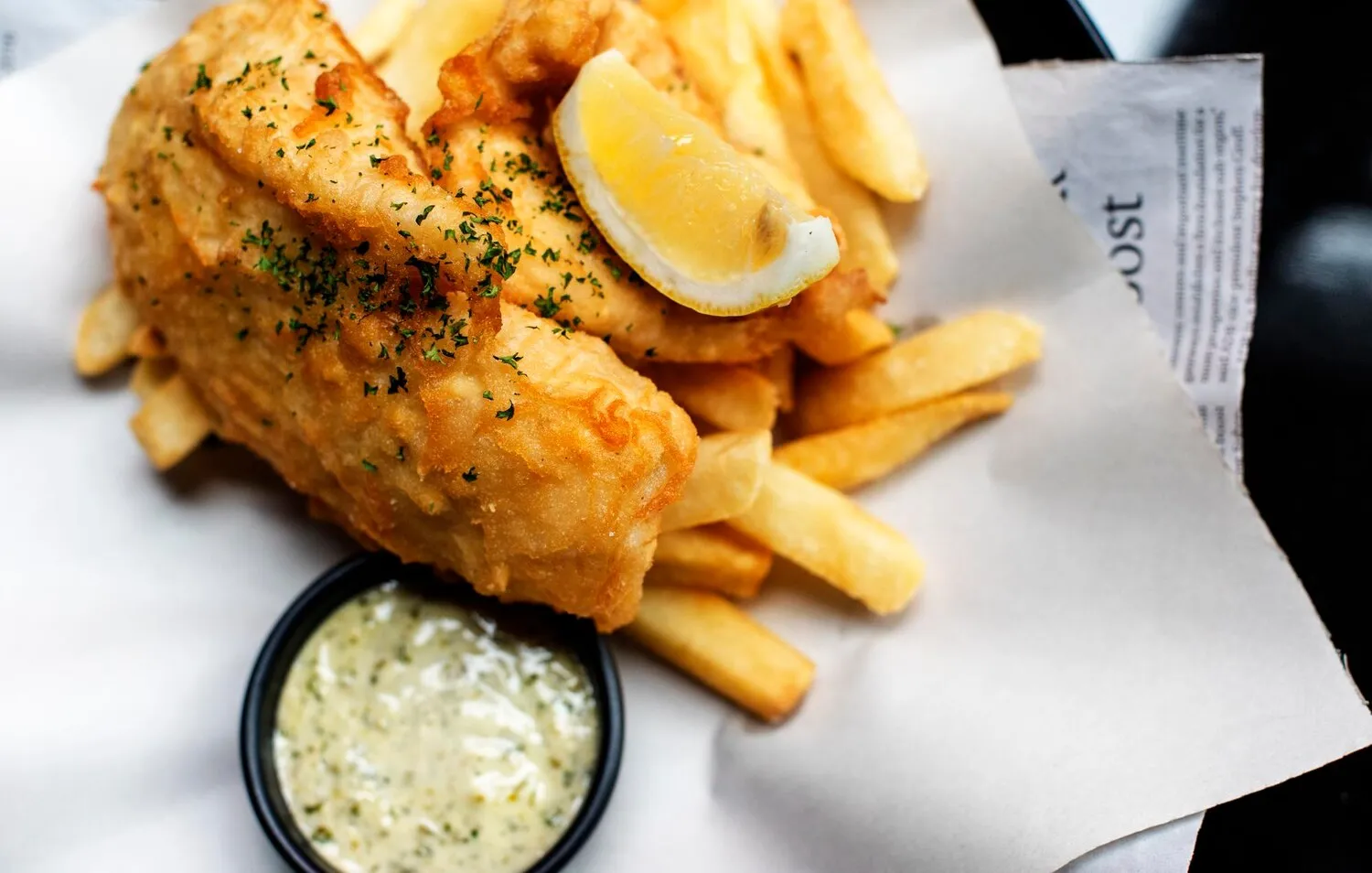
Cod & Chips
Cod served with chips.
Nutrition Facts
* The % Daily Value (DV) tells you how much a nutrient in a serving of food contributes to a daily diet. 2,000 calories a day is used for general nutrition advice.
Fish and chips emerged in England during the 19th century. Fried fish was introduced by Jewish immigrants from Spain and Portugal, while chips (fries) originated in either France or Belgium. The combination of the two into a single dish is believed to have occurred in London in the 1860s.
Cod & Chips holds a special place in British culture, symbolizing working-class traditions, seaside holidays, and national identity.
Working-Class Staple
Historically, Fish and Chips was an affordable and readily available meal for the working class, providing essential sustenance during the industrial revolution and beyond.
Seaside Tradition
Fish and Chips is a quintessential seaside food, often enjoyed fresh from a chippy while strolling along the beach. It is a symbol of British summer holidays.
National Dish
Despite the increasing variety of cuisines available, Fish and Chips remains a beloved national dish, representing British culinary heritage and cultural identity. It has been featured in wartime propaganda and popular culture, further solidifying its status.
Cod & Chips offers a delightful combination of savory, salty, and subtly sweet flavors, complemented by satisfying textures.
The cod provides a mild, flaky, and slightly sweet taste, enhanced by a crispy, golden-brown batter seasoned with salt, pepper, and sometimes malt vinegar. The chips offer a starchy, soft interior with a slightly crispy exterior, providing a contrast to the fish. The overall experience is often heightened by the addition of salt, vinegar, and other condiments like tartar sauce or mushy peas.
Cod Selection
Opt for fresh, skinless, and boneless cod fillets. Haddock can also be used, but cod is the classic choice due to its texture and flavor.
Batter Consistency
A light and airy batter is crucial. Use chilled ingredients (flour, beer or sparkling water) and avoid overmixing to prevent gluten development. The batter should coat the fish evenly without being too thick.
Oil Temperature
Maintaining the correct oil temperature (around 350-375°F or 175-190°C) is essential for crispy and golden-brown fish and chips. Use a thermometer to monitor the temperature accurately. Fry in batches to prevent overcrowding and maintain oil temperature.
Chip Preparation
Use Maris Piper or King Edward potatoes for the best chip texture. Double-frying is recommended: first at a lower temperature to cook the potatoes through, then at a higher temperature to crisp them up. Dry the chips thoroughly before frying to prevent excess oil absorption.
Serving Suggestions
Serve immediately with salt, vinegar (malt vinegar is traditional), and your favorite condiments. Tartar sauce, mushy peas, curry sauce, and tomato ketchup are popular choices.
Explore additional Fish and chips dishes and restaurants
Explore Fish and chipsDiscover top dining spots and culinary experiences in White Rock.
Explore White RockLearn more about the food culture, restaurant scene, and culinary heritage of Canada.
Explore Canada